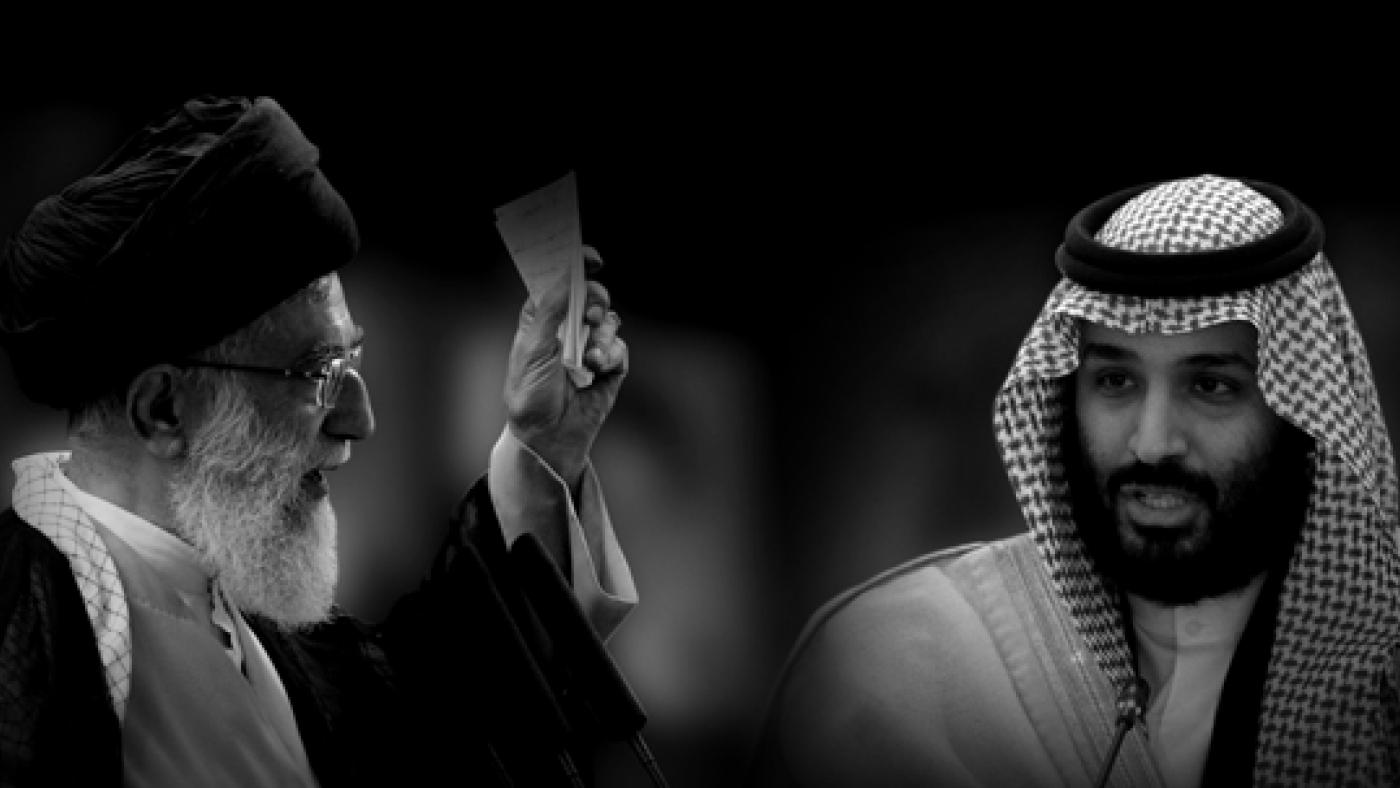The Rivalry Fueling Middle Eastern Conflict
Daniel Hautzinger
February 20, 2018

Frontline: Bitter Rivals is available to stream.
“When elephants fight, it’s the grass that suffers,” an analyst says in Frontline’s Bitter Rivals: Iran and Saudi Arabia. “And in today’s Middle East, the two elephants are Iran and Saudi Arabia.” As devastating conflicts refuse to die down in Syria, Iraq, and Yemen, Iran and Saudi Arabia lie insulated from the destruction – but fan the flames of these interminable crises. The two countries are the region’s heftiest powers, and they have been engaged in a costly rivalry ever since the Iranian Revolution of 1979. Yet they have never attacked each other outright. Instead, they fight proxy wars by supporting militias and other groups in Middle Eastern conflict zones, funneling money to them, training fighters, or, in the case of Saudi Arabia in Yemen, directly striking targets from the air.
“Going to war directly would be disastrous for both countries,” says Martin Smith, correspondent and producer of Bitter Rivals with Frontline founder and executive producer at large David Fanning and producer Linda Hirsch. “For one thing, the source of both countries’ wealth lies right on the Persian Gulf, through which a military path would probably lie, so if they were to fight a war there they would destroy to some degree the oil fields that both of them depend on. I don’t think they want to go to war with each other.”
The reasons why Iran and Saudi Arabia continue to feed the fires of Middle Eastern conflicts in a continuance of their rivalry then, are complex. (Bitter Rivals spends three hours attempting to tease out those reasons, and Smith still says it could have been six times as long.) For Iran, opposition to Saudi Arabia and extension of its influence throughout the region lends respect and power. “They get a lot of credibility by being an aggressive revolutionary state,” says Smith. “Like revolutionary regimes everywhere, they thrive on having enemies and keeping a high level of motivation.”
Iran’s rivalry with Saudi Arabia, which is perhaps the United States’ closest ally in the region besides Israel, is viewed by some as an overarching proxy fight, given that resistance to the US brings cachet in a region where anti-Americanism is high. “You talk to some Iranians,” Smith says “and they say, ‘We don’t care about Saudi Arabia, they’re just a tool of the United States. Our real enemy is the great Satan, the US.’ They keep that place together by maintaining this enemy, not unlike Kim does in North Korea.
“A surprising number of people who you think are otherwise acute have a very conspiratorial notion and will venture into this idea that the US created ISIS to pester them,” Smith continues. “It’s true in some way that the conditions the US set in Pakistan created Al Qaeda, and Al Qaeda of course becomes ISIS, but to say that the US created ISIS is out there.” (Israel provides Iran with another useful enemy, and some analysts have argued that Iran’s support of militias in Syria is in part an attempt to build up another front against Israel, in an “axis of resistance.”)
For the Saudis, the rivalry and proxy wars may simply be pushback against what they see as Iran’s encroachment and aggression towards them, Smith says. “As Adel al-Jubeir, the Saudi foreign minister says, the Saudis would like Iran off their backs, and they’ve decided to draw a line in Yemen.” There’s also a sectarian element to the rivalry: whereas the Iranian government and many of the foreign groups that it supports, such as Lebanon’s Hezbollah, are Shi’a, the ruling Saudi family and many of its allies are Sunni.
This sectarian divide helps explain many of the conflicts in the Middle East that have flared up over the past few decades, but it is less useful in more recent situations such as the Syrian civil war, where much of the fighting has been between regime-supporting Sunnis and revolutionary Sunnis, or in Yemen, where the conflict seems to be more of a warlord power struggle that has been co-opted and escalated by the Saudis and perhaps also Iranians.
“The idea for doing this film originated in people’s confusion over Sunnis and Shi’as and why they are fighting,” Smith says. “But we realized that this couldn’t be reduced to a sectarian debate. Rather, this is a power struggle over the Middle East, so we became interested in showing this power struggle between Iran and Saudi Arabia on center stage, and the way that sectarianism has been used as a tool for motivating people to fight.
“We have also often done documentaries where we look at a single country, often through the US policy lens: what did we do in Iraq, what did we not do in Syria. Our view has become very American-centric, so we thought it was very important to look at this as a region that you could only understand if you understand all of these moving forces.”
While understanding the rivalry between Iran and Saudi Arabia does help explain the conflicts in the region, it does not lend any clarity as to the future. “Where things go next…” Smith trails off. “It’s so much destruction. I’ve traveled the Middle East for twenty years, but the amount of destruction to everything just struck me. It’s just sad. How Iraq and Syria and large parts of Yemen are going to pull themselves back together…” he again pauses. “Most everyone I talked to that knows this region better than I do thinks that it’s going to continue on like this for a while, and it’s not going to get better any time soon.”







